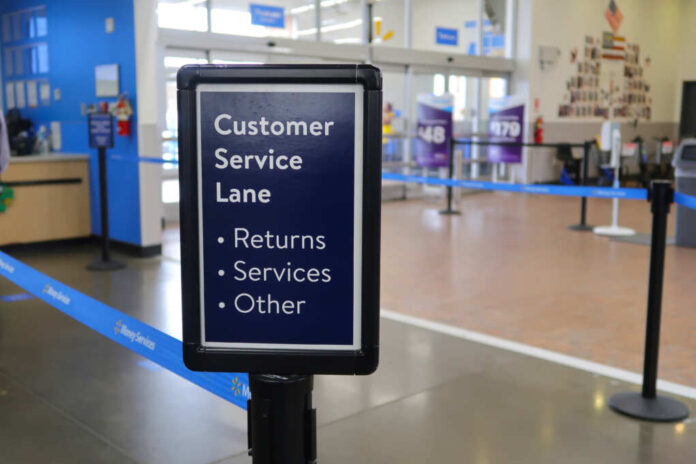
American retailers have reportedly been facing an unprecedented wave of fraud in holiday returns, including counterfeits, fake receipts, and badly damaged items that customers send back while expecting full refunds.
Some of these shocking reports include television boxes being returned filled with bricks or stolen merchandise, expecting refunds for the nonexistent TV.
According to estimates from the National Retail Federation (NRF), more than $101 billion in merchandise was fraudulently returned in the United States in 2023 — which equals roughly 14% of the overall returned items that retailers received in 2023. This is also more than double the number of fraudulent returns in 2020. The NRF also noted that for every $100 in returned merchandise, American retailers lose $13.70 in return fraud.
"The National Retail Federation projects that 17% of returned holiday products this year will be fraudulent."
17% 🫢
Retailers say more goods are coming back as fraudulent returns, including items that have been outright stolen https://t.co/kRsrnGcvgc via @WSJ
— Kim Taylor (@kimmytaylor) January 11, 2024
NRF executive director of research Mark Mathews explained steps that retailers are taking to battle the fraud epidemic in a statement.
“Retailers continue to test and implement new ways to minimize losses from returns, particularly those that are fraudulent, while at the same time optimizing the shopping experience for their customers,” Mathews’ statement read. “Retailers’ efforts include providing greater detailed descriptions on sizing and fit of products for online purchases and requiring a receipt with returned items. As a whole, the industry is prioritizing efforts to reduce the amount of merchandise returned in stores and online.”
Meanwhile, the massive number of returns has been decimating profit margins and could even land some retailers in the red — with industry expert Tom Enright concluding that the economy is “headed for a trillion-dollar problem.”
Speaking with the Wall Street Journal, Enright explained that more and more people have been attempting to trick the system — hoping that a postal carrier scanning the returned shipping label on their fraudulently returned item will get them their refund before the retailer is able to check what is inside the box.
According to the NRF, the most common method of return fraud is “wardrobing” — where customers return used clothing that has already been worn, torn, or stained. Typically in these cases, a customer will purchase a clothing item with every intention of returning it after wearing it for an event or short period of time.
More than one-third of consumers have admitted to embellishing or exaggerating in their explanations for returning an item to receive a refund or avoid paying fees, according to a November survey of more than 1,000 adult consumers from returns technology firm Optoro. The poll showed that 30% of respondents admitted to wardrobing, 43% admitted to wardrobing a few times per year, and 23% admitted to wardrobing at least once a month. The survey also showed that 40% of consumers aged 18-29 were most likely to “wardrobe” items.
According to Optoro chief executive Amena Ali, fraud is “definitely becoming more and more of a concern to retailers” — especially as customers are trying to send obvious counterfeits back to luxury retailers as fraudulent returns.
However, retailers have begun trying to fight back against the fraud epidemic, including by demanding that consumers physically return items to in-store locations where they can be examined on the spot by employees. This option also allows retailers to keep track of individuals who have repeatedly tried to game the system. Other methods of fighting back include implementing shorter return windows and strengthening employee education on how to identify fraudulent returns.














